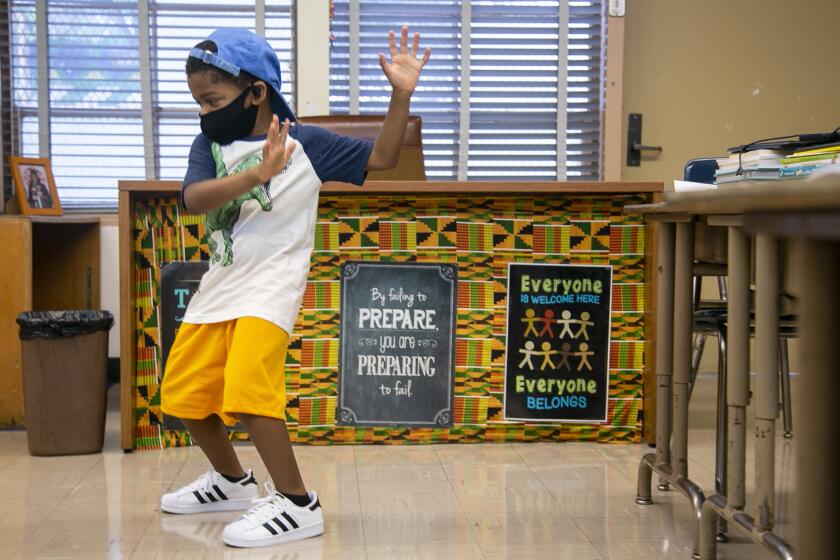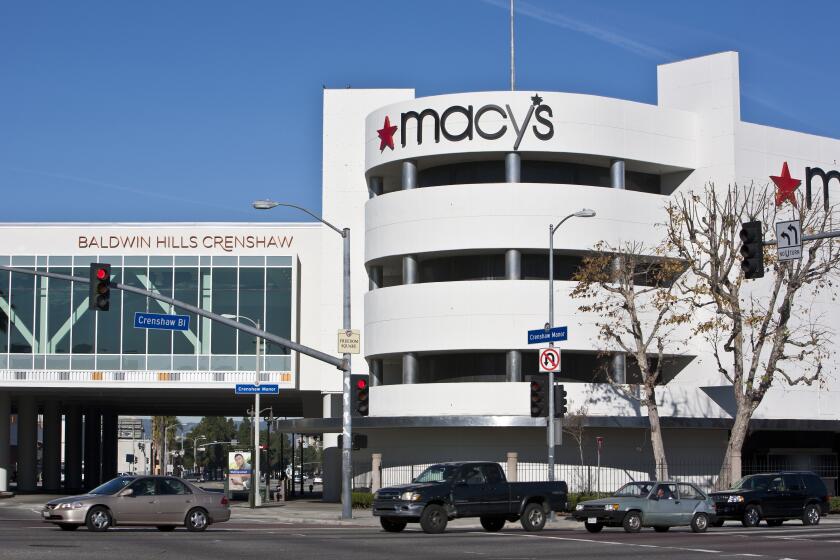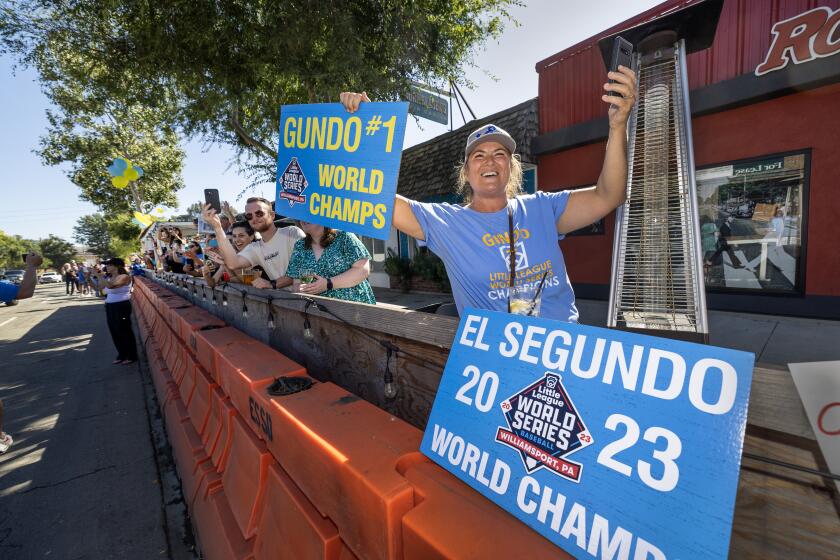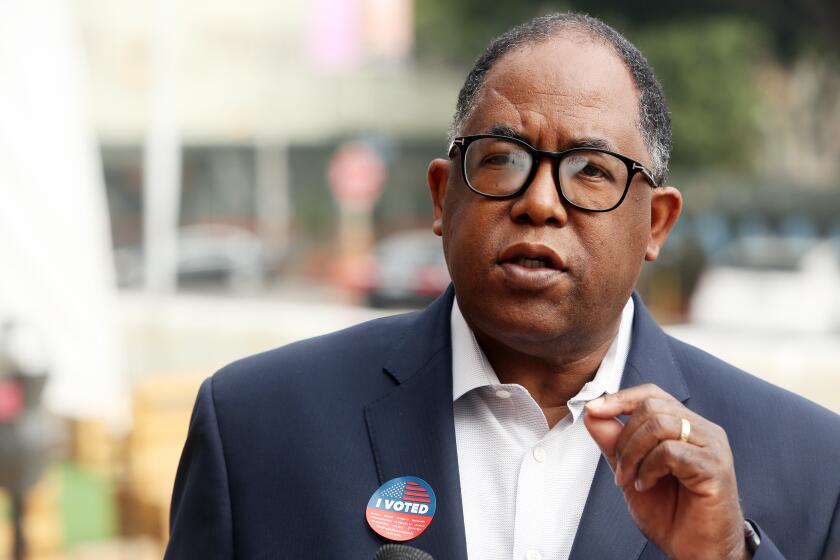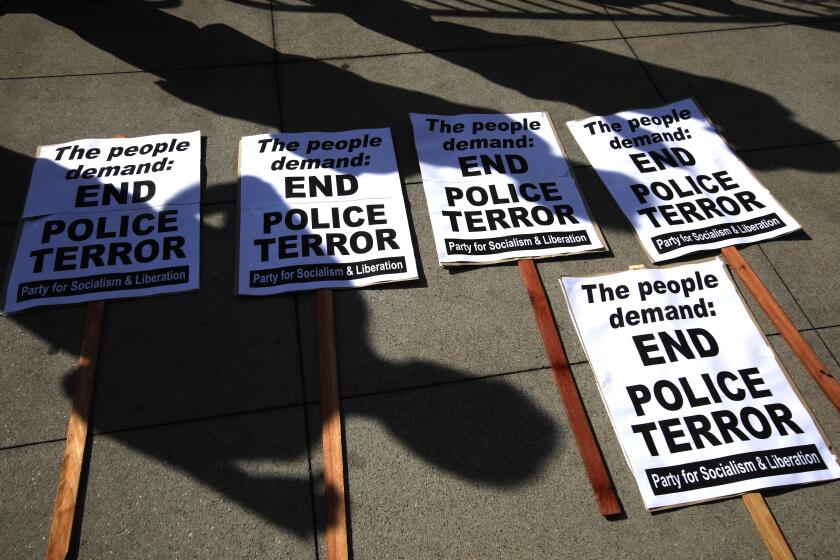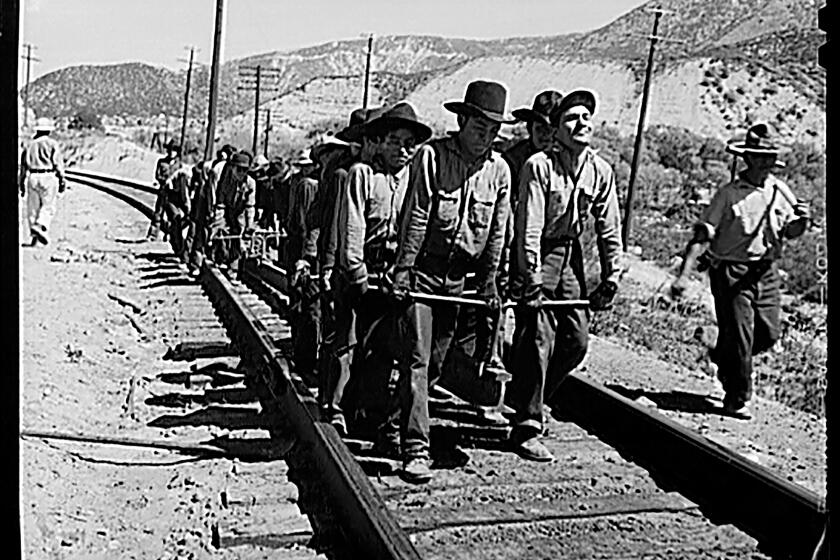Will ‘all that glitters’ turn L.A.’s last solidly Black city white?
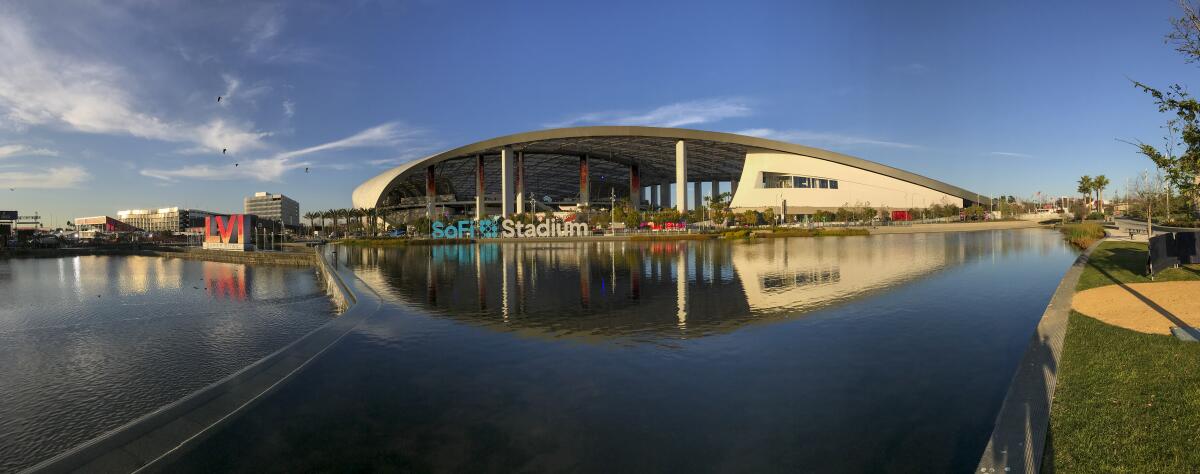
- Share via
Living in Inglewood these days is living in tension about change. Like many other places in and around L.A., its core is being transformed by development that’s become a spectacle, something I have been watching unfold with a mix of apprehension and disbelief.
SoFi Stadium is not just a stadium, it’s become shorthand for everything else in the built world of Hollywood Park — condos, retail — as well as the nearby and soon-to-be-completed Intuit Dome, the new home of the Clippers, which rises at the corner of Prairie Avenue and Century Boulevard like a giant, space-age basketball.
For the record:
7:31 p.m. March 4, 2024An earlier version of this piece said the Kinsey exhibit opened in 2023; it was 2022. In addition, changes have been made to clarify that the Intuit Dome, a separate development, sits on public land; SoFi Stadium and Hollywood Park do not.
Will the LAUSD find a way to support, even magnify, that rarest of success stories: A high-achieving predominantly Black neighborhood school?
All that glitters presses up against the neighborhoods in the last solidly Black city in the county, and while the outside world touts SoFi, etc., as progress, in Inglewood it feels very much like the reconfiguring is being done without the local population in mind.
But not entirely.
Gentrification in Inglewood has always worn a face of Black uplift, which is part of what causes the tension. Admittedly, that face can be gratifying. During Black History Month, SoFi featured a world-class Black art and historical-artifact exhibit, courtesy of the renowned collectors and philanthropists Bernard and Shirley Kinsey. This is an updated, enhanced version of the Kinsey exhibit that debuted in February 2022.
It’s not just another department store dying off. For many, the Baldwin Hills store had as much to do with identity as it did with shopping.
Next door to SoFi, in the walkway of a new retail development that includes a luxury movie theater, there are works by the celebrated Black sculptor Alison Saar. Last year that walkway was the site of a lively weekend festival for Black-owned businesses. On the side of a building is a striking mural of a Black woman floating in water by local artist Calida Rawles. And on other walls, ads depict Black residents enjoying the amenities of a chic, prosperous new city that attracts people of all colors from all over L.A., from all over the world, as the banners along Prairie declaring “A Global Stage” suggest.
It’s a heady vision of the future, one I would love to believe in. Every time I hurry through that walkway on my way to a movie, I marvel at museum-quality art here in the neighborhood, out in the open. It’s an upgrade I can’t argue with.
The Little League championship resonates for all Angelenos because El Segundo is part of the loose federation of Greater L.A. And at times like these, the federation coheres.
And yet the bigger picture is not all pretty. Part of the SoFi development deal with Inglewood was a commitment to commissioning public art in and around the stadium. It’s actually required of big developments like this. The city was supposed to oversee the process, but it more or less ceded that power to the developer, just as it ceded other kinds of oversight when it fast-tracked the stadium back in 2015.
City Hall has all along been willing to trade away almost anything for development, especially sports venues. Why? Because for way too long the city languished as what I call the South-Central of South Bay — struggling to attract even modest national chain stores because its Black and brown demographics automatically made it an undesirable market. The recession of the early 1990s compounded the problem, along with the chronic inability or unwillingness of elected officials to plan for serious change.
Too many Angelenos are angry that Ridley-Thomas, who cared so much about justice, was found guilty of corruption. In their minds, that means justice wasn’t served. But it was.
SoFi was thus sold to and by City Hall as our great change agent, the thing that would finally take Inglewood from moribund to modern.
The stadium’s engendering change all right, but the cost feels too high, destabilizing. Art is wonderful and welcome, but what Black people really need to secure their futures are affordable housing and decent schools. SoFi and all the rest secure neither. To the degree new development has taken up public land in this large small city — the Intuit Dome is going up on property Inglewood took by eminent domain — it is actually making more affordable housing less attainable.
It’s not all bad, of course. Notable Black business and creative spaces have been popping up in the new Inglewood, including galleries, restaurants and coffee hangs. Hilltop Café, for instance, on La Brea Avenue is co-owned by local-girl-made-good Issa Rae.
Endemic racism, nurtured by white people, is the culprit in Memphis, but that doesn’t alleviate the anguish of seeing Black officers devalue their own without remorse.
These are the kinds of small but significant businesses that Inglewood has always had, but just not in a critical mass. Together they express the true character and promise of the city, make it a destination — in real estate marketing speak, make it “desirable.”
Hopefully, the new desirability won’t be synonymous, as it so often is, with “white.”
Rick Garzon, whose downtown gallery Residency recently moved to the Hollywood Park retail district close to SoFi, told me he’s confident that Inglewood will beat back the usual displacement narrative of gentrification and create a new one of real Black progress. It has the goods, he says, starting with a solid base of homeowners committed to the city who aren’t going anywhere. Development may be pressing down on us, but we won’t crumble, he says. We are changing the game.
I would love to believe that too. I would love the corporate campaign painting Inglewood as Black and prospering on its own terms — an equal partner in this breakneck development — to be true.
Jean Pfaelzer discusses recasting history in ‘California, a Slave State,’ which tracks the record of racism and forced labor that drove the state’s ‘startup’ culture.
But history is against it. So is math — the economics of gentrification, intricately tied to have/have-not realities, including the racial wealth gap, virtually guarantee that new homeowners won’t be Black. The same is true of renters, who are actually the majority of Inglewood residents. The median price of a home in some Inglewood neighborhoods is nudging up to $900,000 now. That’s downright modest in L.A.’s overheated market but out of reach for the Black working-to-middle class that is the city’s foundation.
Inglewood is a mosaic, but also one community with common needs. That fact is what makes us truly unique, a work of art — in progress. The physical art — and the art to come — accurately conveys Black power and depth. We just have to live up to the image.
Erin Aubry Kaplan is a contributing writer to Opinion and a columnist at Truthdig.
More to Read
A cure for the common opinion
Get thought-provoking perspectives with our weekly newsletter.
You may occasionally receive promotional content from the Los Angeles Times.
